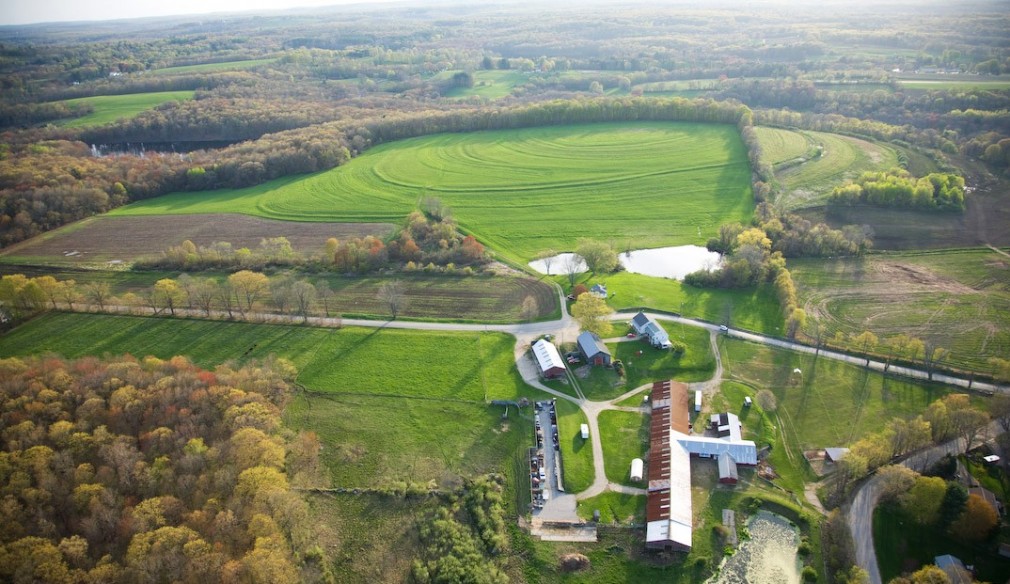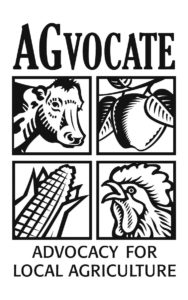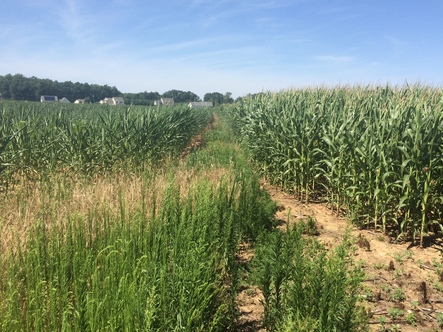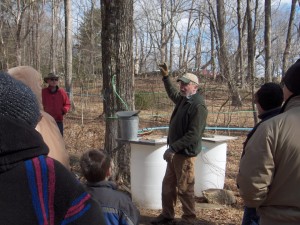Agriculture & Forestry

Agricultural Projects (Keep scrolling for Forestry Projects)
Growing Agricultural Businesses in The Last Green Valley
The Last Green Valley is the only remaining undeveloped region in the coastal sprawl between Boston and Washington, and it has the significant land and water resources needed for food production - 84% forest and farm lands, with dairy farms, orchards, vegetable farms, herds of beef, bison, alpaca, goats, sheep, and flocks of poultry. Among these are the largest bison, alpaca and free-range turkey farms in Connecticut.
Regional Conservation Partnership Program - Saving Money for Agricultural Businesses
Do healthy soil practices help conserve resources and improve farm economics? A picture is worth 1000 words. This image was taken by USDA Natural Resource Conservation Service Windham County District Conservationist, Ray Covino. "On the right – second year no-till, planted green using diverse cover crops. On the left, plowed, harrowed with minimal cover crops. There has been no rainfall for over 40 days, and the soil type is very sandy and very well-drained. On the left, we saw no soil moisture in the top 6” profile, and the corn is curled with stress. On the right, the soil was cool to the touch under heavy residue, with moisture on the soil surface."
Does anyone wonder which one will require less inputs and have a better yield?
Agricultural producers can save money while building healthy soils and improving water quality in our rivers and streams. New funds are available to implement conservation practices in the field that can save farmers time, effort, and money. By improving soil health, producers can reduce erosion and runoff, reduce pest and weed problems, reduce fertilizer use and fuel consumption with fewer tractor passes, and mitigate drought with soils that hold more moisture.
Technical assistance is available to help producers navigate the system, calculate the economic benefits of different conservation practices, and implement new conservation practices in their fields.
The new funds and technical assistance are being provided by a Regional Conservation Partnership consisting of nonprofit organizations and government agencies working together throughout the Thames Rivers watershed in eastern Connecticut. Agricultural businesses are encouraged to contact one of the project partners to learn more:
Amanda Fargo-Johnson
CT Resource Conservation and Development Council (RC&D)
860-345-3977 or email CTRCDAmanda@aol.com
Dan Mullins
Eastern CT Conservation District (ECCD)
860- 887-4163 X 402 or email dan.mullins@comcast.net
Lois Bruinooge
The Last Green Valley, Inc. (TLGV)
860-774-3300 or email lois@tlgv.org
Natural Resources Conservation Service (NRCS)
Danielson Field Office – 860-779-0557
Norwich Field Office - 860-887-3604
AGvocating for Local Agriculture
The "AGvocate Program" provides a forum for municipal officials, agricultural producers, and other stakeholders to strengthen the farm-friendliness of eastern Connecticut towns. Fourteen towns - Ashford, Bozrah, Brooklyn, Canterbury, Eastford, Franklin, Hampton, Killingly, Pomfret, Scotland, Sterling, Thompson, Windham, Woodstock - participated in the AGvocate Program and have all made significant strides in promoting agriculture at the local level. Read more about the AGvocate Program on TLGV's website dedicated to agricultural issues, aginfotlgv.org.
Farms, Orchards, Nurseries, Wineries and Breweries
Dozens of agricultural businesses in The Last Green Valley are open to the public and you are invited to stop by! From pick-your-own strawberries to heirloom vegetables and Halloween pumpkins, you can find it all in The Last Green Valley.
Nothing tastes better than fresh milk, maple sugar, homestead cheese, honey, free-range turkeys, beef, and bison, goats milk, ice cream, organic produce, wine, beer, and spirits that are grown, produced, and sold right from the farm. Enjoy family fun wandering through elaborate corn mazes, pick-your-own farm fields, and cut-your-own Christmas tree farms. Purchase gifts made from locally-raised wool, alpaca, and llama fibers, or plant native perennials in your garden. Find it all in Explore!
Green & Growing - A Call to Action
Green & Growing - A Call to Action (2011) is a comprehensive regional plan to sustain and expand food, fiber and forest production and related agricultural economies in The Last Green Valley. TLGV's development of Green & Growing was generously supported by the 1772 Foundation.
Within the southern New England region, there are 11 million people who need a safe, adequate, and local farm-to-table continuum; within The Last Green Valley there are 300,000 people, many of low income. The Last Green Valley has the significant resources necessary to meet their needs. Furthermore, increasing the economic value of open space through the use of agriculture significantly advances the goals of most of The Last Green Valley communities: to retain their rural character, to preserve natural resources, to encourage economic development, and to ensure a healthy quality of life. Perhaps most importantly, increasing the economic value of working land may be the best way of preserving the land.
Forestry Projects
NEWS FLASH – TLGV and Partners Bring $6.1 Million to the Region for Forest Conservation!
Click here for more details and funding announcements as they are released.
TLGV is proud to announce that it has successfully partnered with 19 organizations to bring $6.1 million in new federal dollars to the region for healthy woods and forest land conservation.
Most of the funds will go directly to landowners for bird/wildlife habitat assessments and forest management plans, good forest conservation practices, and easements for permanent woodlands protection.
The funding was awarded by the USDA Natural Resources Conservation Service after a very competitive process, and underscores the importance of our southern New England forests to not only the region but the nation.
The incredible lineup of top-notch and dedicated partners includes: MassConn Sustainable Forest Partnership/Opacum Land Trust, Northern RI Conservation District, MA Executive Office of Energy and Environmental Affairs, Providence Water, Yale School of Forestry & Environmental Studies, CT Department of Energy and Environmental Protection, Hull Forest Products, Thames River Basin Partnership, New England Forestry Foundation, Eastern CT Conservation District, Norcross Wildlife Foundation, RI Division of Forest Management, RI Woodland Partnership, Harvard Forest, Yale Sustaining Family Forests Institute, Audubon Connecticut, Mass Audubon, Audubon RI and of course the USDA Natural Resources Conservation Service.
Click here for more details and funding announcements as they are released.
Please Support Us!
The Last Green Valley, Inc. (TLGV) is a 501(c)(3) non-profit.
We rely on your membership contributions and donations to carry out our work. Together, we can care for it, enjoy it, and pass it on.



